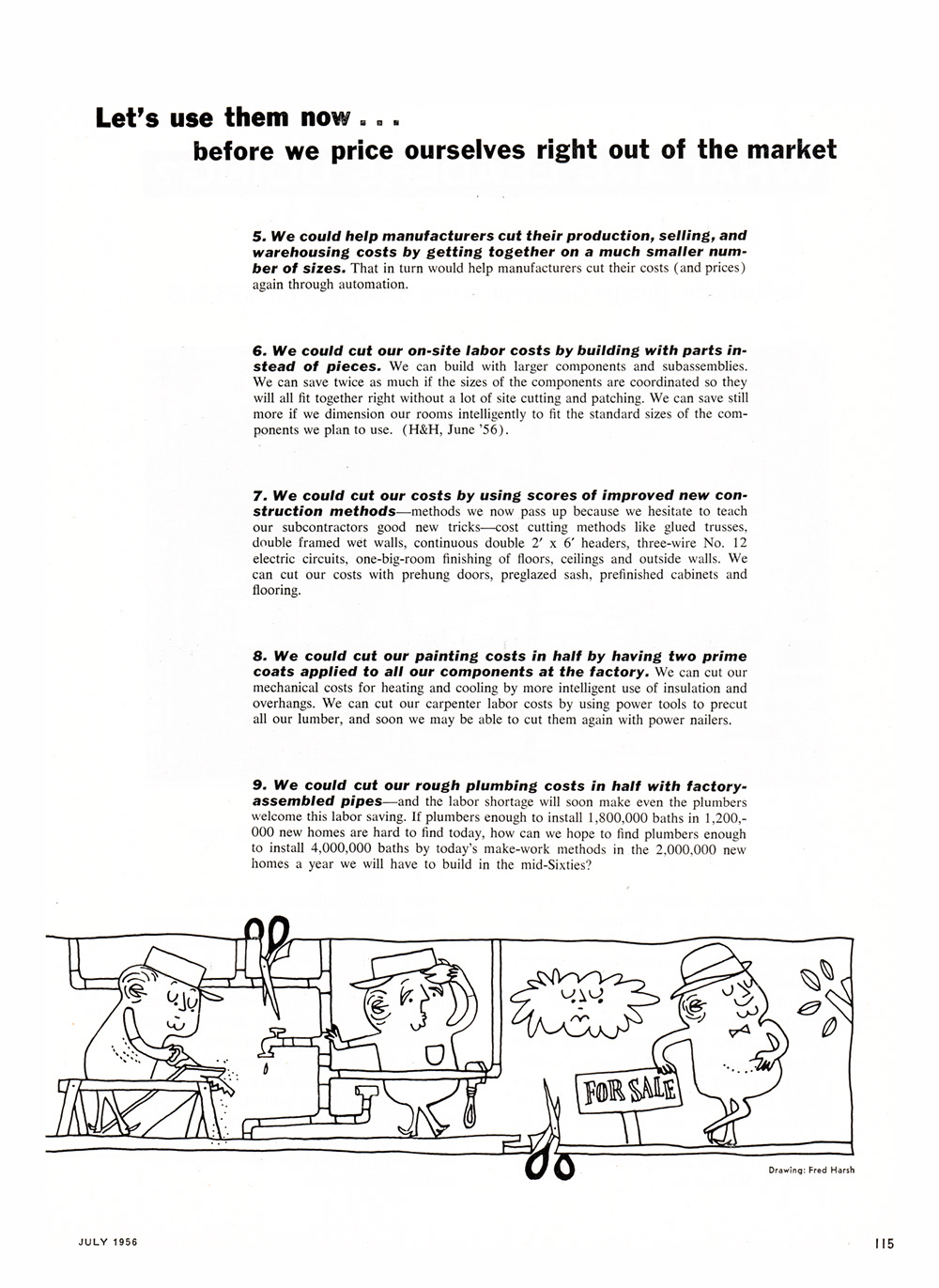


Let's use them now » • .
before we price ourselves right out of the market
5. We could help manufacturers cut their production, selling, and warehousing costs by getting together on a much smaller number of sizes. That in turn would help manufacturers cut their costs (and prices) again through automation.
6. We could cut our on-site labor costs by building with parts instead of pieces. We can build with larger components and subassemblies. We can save twice as much if the sizes of the components are coordinated so they will all fit together right without a lot of site cutting and patching. We can save still more if we dimension our rooms intelligently to fit the standard sizes of the components we plan to use. (H&H, June '56).
7. We could cut our costs by using scores of improved new construction method-”methods we now pass up because we hesitate to teach our subcontractors good new trick-”cost cutting methods like glued trusses, double framed wet walls, continuous double 2' x 6' headers, three-wire No. 12 electric circuits, one-big-room finishing of floors, ceilings and outside walls. We can cut our costs with prehung doors, preglazed sash, prefinished cabinets and flooring.
8. We could cut our painting costs in half by having two prime coats applied to all our components at the factory. We can cut our
mechanical costs for heating and cooling by more intelligent use of insulation and overhangs. We can cut our carpenter labor costs by using power tools to precut all our lumber, and soon we may be able to cut them again with power nailers.
9. We could cut our rough plumbing costs in half with factory-assembled pipe-”and the labor shortage will soon make even the plumbers welcome this labor saving. If plumbers enough to install 1,800,000 baths in 1,200,-000 new homes are hard to find today, how can we hope to find plumbers enough to install 4,000,000 baths by today's make-work methods in the 2,000,000 new homes a year we will have to build in the mid-Sixties?